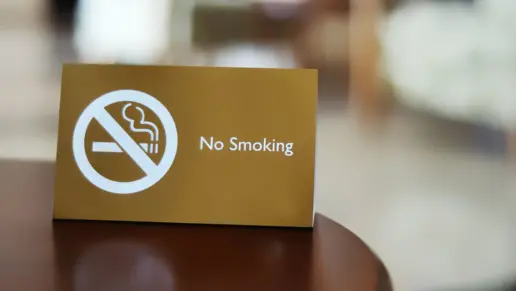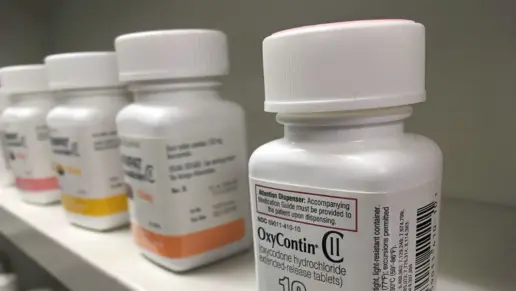Alcohol and Drug Misuse, Abuse, and Addiction
Substance use disorder is the term for drug addiction promoted by the Substance Abuse and Mental Health Services Administration (SAMHSA) to reduce the stigma associated with the word addiction. However, drug addiction and drug abuse remain the most commonly used terms in the public.
Drug and alcohol abuse often begins as a way to socially fit in with other people. But social exploration can quickly turn into a physical and psychological addiction, depending on the frequency of use and substances being used.
At other times, the attempt to address medical or mental health conditions can devolve into substance misuse and, ultimately, addiction. For example, in many cases opioid addiction begins with a sports injury or surgical recovery.
When prescriptions for pain medication are discontinued, a patient may start seeking street drugs to avoid withdrawal from opioids.
Addiction of all kinds is at epidemic proportions in the United States today. Many treatment centers exist across the country, ranging from hospitals, to detox clinics to sober living housing. One key to successful treatment is the length of time an individual spends in a safe and supportive environment.
Following a step down program from detox to continuing care over the course of a full year can strengthen the odds for a long recovery.
What are the Most Common Types of Addiction?
The most common types of addiction are alcohol, marijuana, prescription narcotics (opioids), cocaine, and methamphetamines. Alcohol, nicotine, and marijuana are the most common substances abused. Comparatively, there is less research on the addictive effects of marijuana than there is concerning alcohol addiction.
Marijuana has been legalized in several states, but studies of long term physical and mental health effects are mixed. The adverse effects of alcohol addiction are also well known. While many other substances carry a risk of addiction, a 2022 study indicated that alcohol and marijuana addiction remain the most prevalent.
Identifying the Stages of Alcohol and Drug Addiction
Addiction looks different for each person depending on the type of substance they’re using, their personal situation, and how serious their addiction is.
The disease of addiction may progress rapidly from substance misuse to tolerance to dependency to addiction. Or substance use disorder may emerge more gradually over time until at last its impacts on your life, health, and relationships can no longer be dismissed or denied.
That said, there are some common behavioral patterns many people with addiction tend to show. If you recognize these signs in yourself or in someone you love, it may be time to seek an assessment and support from a qualified clinician in mental health or addiction recovery,
Abnormal Changes in Behavior Due to Addiction
Many users start engaging in high risk behaviors such as driving while under the influence. For instance, they may start frequenting dangerous environments to get more of the drug.
People may start lying about their whereabouts. They may also start hiding things from other people they have always trusted. Friends and family members may also notice that users start keeping secrets when they have previously been honest and transparent. Users may start disappearing for days or weeks on end and then become defensive when asked about their whereabouts.
They might become financially irresponsible, unable to pay for bills, always broke, or asking others for money. They may start missing work, school, or social gatherings due to addiction or because they’re hungover or going through withdrawal. Many times, they’ll have excuses for why they have been missing normal activities.
Legal Problems Begin as a Result of Addiction
Oftentimes, users begin to develop legal problems due to their addictions. They may start stealing prescription medications from family members.
They may also start getting in trouble with the law. Intoxicated individuals have a higher chance of being arrested for DUI/DWI charges. They may also end up in jail or a temporary detention facility for being intoxicated or displaying disorderly conduct.
Physical Appearance and Health Issues Change Due to Addiction
Users tend to experience changes in their physical and behavioral characteristics due to addiction. You may start to notice certain facial features around the eyes, such as sunken, dark circles, or bloodshot eyes. The eyes and the skin may also acquire a yellowish hue due to liver dysfunction.
Users may also experience weight loss or weight gain. Rapid loss of weight, unusual gaining of weight, and water retention issues are common due to internal issues, such as kidney disease, pancreas problems, or liver disorders.
They also may display a lack of energy or they may crash after a burst of excessive energy. Many people with addictions have sleep disruptions or insomnia.
Finally, while not universal, some individuals struggling with addiction may experience a decline in personal hygiene. This can result from prioritizing substance use over self-care, financial difficulties limiting access to clean clothes or hygiene products, or mental health challenges that co-occur with addiction. They may smell of alcohol or drugs.
Recognizing Signs of Drug Abuse or Intoxication
Initially, signs of addiction are likely to be noticed by changes in a person’s lifestyle and ability to function. Specific drugs have their own symptoms, but many remain similar in their destructive impact to the brain and body. Below are some of the most common types of drugs being misused and that become addictive.
Alcohol is the most common substance abused in American society. Over 200 people a day die from alcohol related causes.These are a few of the symptoms associated with alcohol abuse:
- Drinking outside social gatherings and when alone.
- Using alcohol as a coping mechanism for stress.
- Continued alcohol consumption in spite of negative consequences such as DUI/DWI.
- Hiding and denying alcohol abuse.
- Relationship problems due to alcohol abuse.
- A rise in tolerance indicates the need to use more to get the same effect.
- Tremors and nausea associated with withdrawal symptoms.
- Trying and failing to stop drinking.
Marijuana, Cannabis or Hashishis the most widely used recreational drug in the world. There are over 700 different kinds of weed strains and all contain various amounts of tetrahydrocannabinol (THC), the psychoactive ingredient. Signs of marijuana use include but are not limited to:
- Drowsiness.
- Anxiety and paranoia.
- Dry mouth.
- Food cravings for salt or sugar (the munchies).
- Increased auditory and sensory perceptions (sensitivity to light or sound).
- Increased blood pressure and heart rate (feeling hot).
- Dry coughing.
- Red eyes.
- Coordination problems such as slow reaction times.
- Memory and concentration problems.
Delta 8 or 9 or Synthetic cannabis like K2, Spice, Kronic: Synthetic forms of THC can produce the same symptoms as cannabis and euphoric mood. However, the levels of THC or its synthetic analogs in K2, Spice, and Kronic are unpredictable and dangerous.
Physical symptoms can include vomiting and falling into a coma. Psychological and mental symptoms often consist of confusion and a lost sense of time or space, becoming violent, and other psychoses.
Meth addiction, Cocaine addiction and other stimulant drugs: Amphetamine addiction can involve the use of methamphetamine, cocaine, prescription medications for ADHD like Ritalin, Concerta, or Adderall, and bath salts.
The latter are synthetic cathinones and are used to stimulate the nervous system and produce superhuman energy. They can be recognized by these symptoms:
- Feeling excitement and euphoria.
- Being overconfident.
- Believing one can do things not normal, like fly.
- Increased alertness and sensations.
- Dilated pupils.
- Hallucinations and delusions.
- Poor judgment and/or confusion.
- Anxiety and paranoia.
- Changes in heart rate, blood pressure and body temperature.
- Nausea, vomiting.
- Damage to mucous membranes, bloody noses, (from snorting).
- Mouth sores, gum disease, teeth damage.
- Insomnia.
- Loss of appetite, weight loss.
- Depression as drugs wear off, irritability, violent temper.
Club Drugs are often used at parties to enhance your euphoric experience.One of the most common is ecstasy (aka molly) that produces an altered state of consciousness similar to other psychedelic substances. When you use ecstasy, you may appear to be amorous, happy, and socially empathetic. Your senses are heightened, and you lose inhibitions.
However, club drugs can cause adverse physical reactions. You may experience poor coordination and lose consciousness.
GHB (gamma-hydroxybutyric acid), ketamine, and flunitrazepam (Rohypnol)are considered sedatives and are sometimes used criminally to sedate victims of sexual assault. While the sedation is temporary, your aftereffects can last for several days, depending on the dosage. Effects include the following:
- Loss of memory, muscle control/paralysis, and consciousness.
- Decreased heart rate and blood pressure (can lead to death).
- Involuntary tremors and shaking, feeling cold.
- Muscle cramping and teeth clenching.
Barbiturates, benzodiazepines, and hypnotics are depressants for the central nervous system. They are available as pharmaceutical grade products that are prescribed for anxiety and stress related issues. When used recreationally and illicitly, they are addictive and are dangerous to withdraw from without medical assistance.
Phenobarbital is a barbiturate while Valium, Xanax, Ativan, and Klonopin are all benzodiazepines. Hypnotics that are prescribed for sleeping include Ambien and Sonata, but can cause serious side effects, such as dissociative sleep walking.
Signs of drug abuse of these medications include but are not limited to the following.
- Slurred speech or lack of coordination that result in dizziness and falls/accidents.
- Irritability or mood changes.
- Problems concentrating or thinking clearly, including memory loss.
- Involuntary eye movement.
- Lack of inhibition.
- Slow breathing and reduced blood pressure.
Hallucinogens are psychedelic drugs used to blur the boundaries between consciousness and unconsciousness. Users typically experience a “higher state” of being. The most commonly used hallucinogens are LSD and PCP.
However, there are many other drugs that fit into that category such as psychedelic mushrooms and DMT. While many drugs can cause hallucinations, hallucinogens are dissociative drugs that cause a reduced perception of reality.
People on hallucinogens will appear with these symptoms, but may also have others.
- The inability to tell reality from fantasy, which can become permanent with extensive use.
- Hallucinations in all senses: seeing, hearing, feeling.
- Distorted senses, such as “hearing colors,” or rapid speech, intolerance to loud noise.
- Impulsivity in behavior and emotions, such as a quick transition from happiness to anger.
- Shaking, tremors, inability to control bodily functions, that lead to seizures and coma.
- Memory loss, black outs along with flashbacks.
- Poor judgment.
- Out of body experience.
- Feeling pins and needles on skin, not being able to touch or be touched.
- Paranoia and anxiety.
Inhalants include a variety of compounds with chemical vapors that produce a psychoactive or mind altering effect when inhaled. There are more than 1000 products that can be used, and they’re all very dangerous.
The most common inhalants are nitrous oxide canisters known as whippets or using aerosol canisters for the same effect. People also use glue, markers, paint, and cleaning fluids. Inhalants cause a very short term euphoric response and often end in a splitting headache.
Signs of the use of inhalants include but are not limited to the following:
- Disorientation, mimics alcohol intoxication.
- Lack of coordination, dizziness, or unconsciousness due to lack of oxygen to the brain.
- Glassy eyes, runny eyes and nose, dazed appearance.
- Paint or stains on body or clothing.
- Sores around the mouth and nose.
- Chemical breath or smell of chemicals in person.
- Nausea, vomiting, lack of appetite.
Opioid addiction often begins with prescription painkillers that are either made from opium plants or through synthetic means. Opioids include heroin, morphine, codeine, methadone, fentanyl, and oxycodone.
Opioids often require an increased dosage to maintain the same effect which can lead to overdose in the case of addiction. The unfortunate trafficking of fake pills laced with fentanyl has resulted in an increased first time user death rate.
To get a sense of whether someone may be abusing opioids, look for these signs:
- Increased tolerance to pain.
- Restricted pupils that can be as small as the size of pinpoints.
- Drowsiness, sedation, (nodding off).
- Agitation when coming off the drug.
- Slurred speech.
- Lack of attentiveness or ability to be aware of surroundings.
- Coordination problems and confusion.
- Constipation.
- Vomiting and nose sores.
- Evidence of needle use in unusual places on the body.
- Depression.
- Withdrawal symptoms of pain, flu like sickness, sweating and nausea.
When to Seek Emergency Help
Emergency help should be sought at the first symptom of a potential adverse event or an overdose.
Physical symptoms include a change in consciousness, black outs/flashbacks, or seizures or convulsions. You may have trouble breathing or experience signs of a heart attack, chest pain or pressure.
Psychological indicators can include severe emotional distress or unusual reactions to using a specific substance. If you feel suicidal, homicidal, or unable to control your actions, seek emergency help immediately.
Staging an Intervention for Substance Use Disorder
People who have an addiction often deny the severity of the circumstances threatening their lives. ome addictions lead to incarceration or death. , However, recovery is possible with the right treatment and support.
An intervention is a structured meeting to confront the behavior of drug abuse before things get worse. The purpose of the intervention is to ask the person to accept treatment, share how their addiction is affecting their loved ones, and emphasize how much they are loved.
An intervention can often motivate a person to get help when they have previously resisted treatment. Interventions should use a licensed professional substance use disorder counselor along with any family or friends who share concerns for their safety.
It should also be noted that evidence surrounding the efficacy of interventions is mixed. While some individuals respond positively to the intervention and agree to treatment, others may strongly resist and be less likely to seek care.
For this reason, interventions should be conducted only after due care and deliberation and with the support of a reputable professional.
Where can I find More information About Drug Abuse Treatment?
There are many resources available for people seeking help with substance use disorder, alcohol addiction, or drug abuse. These websites are informative.
- 988–Suicide prevention line.
- American Society of Addiction Medicine: http://www.asam.org.
- Substance Abuse and Mental Health Services: http://samhsa.gov/find-help.
- National Center on Substance Abuse and Child Welfare: https://ncsacw.acf.hhs.gov.
- Find drug abuse and alcohol addiction treatment near you at https://www.rehab.com.
- Learn more about addiction at http://www.addictions.com and https://www.webmd.com/mental-health.
What are the Treatment Options for Alcohol and Drug Abuse, Misuse, and Addiction?
A step down program for substance use disorder may begin with withdrawal stabilization or detox. Evidence supports that if a person stays in some level of treatment for at least one year, their chance of staying in recovery increases by fifty percent.
- Inpatient Rehab usually consists of residential programming for stabilization and building a continuing care treatment plan and support system. Inpatient care typically lasts a minimum of 30 days.
- Partial hospitalization (outpatient day treatment) occurs 4-5 hours per day for up to 20 hours per week for one to two weeks.
- Intensive outpatient (IOP) occurs 9-12 hours per week, three days a week.
- Outpatient treatment is appropriate for some individuals with addiction for detox and stabilization, andas a maintenance phase for everyone. A typical outpatient maintenance program requires1-3 hours per week of group or individual counseling.
- Long term aftercare is maintained through ongoing outpatient counseling and peer support groups such as Narcotics Anonymous, Alcoholics Anonymous, or National Association of Mental Illness (NAMI).
Substance Abuse Rehab Centers Near You
Finding facilities near you…





